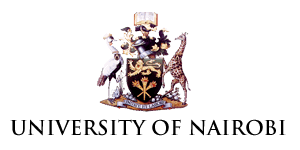Cassava Offers under Exploited alternative Animal feeds for farmers: Kilifi and Taita Taveta Counties
My name is Elijah Mwangi, I have a background in Animal health undertaking MSc in Animal Nutrition and Feeds Sciences. After completing the mandatory course work for the degree at the University of Nairobi, I got lucky as one of the third cohorts for the RUFORUM funded CARP+ program under stewardship of Professor Mwang’ombe.
My clear cut-out role was to look into the use of cassava or by-products of cassava processing that could be used in animal feed industry in Coastal Kenya. With the increasing human population in mind and consequent competition with animal feed manufacturing, I settled on cassava peels. These are not only highly nutritious but also easily accessible for use as animal feeds that could partially replace maize/maize by-products in animal feeds hence releasing the maize into human consumption.
To effectively utilize the cassava peels, the hydro-cyanide (HCN) content has to be reduced to safer levels to avoid deaths as a result of consumption of large quantities of fresh peels within short time. Various methods have been used including sun- drying, ensiling, retting and microbial fermentation. All these having variable improvements in nutrition composition and reduction in HCN.
In November, 2019 Prof. Mwang’ombe organized a field visit for me and my colleague Mr Samuel Mwathi from the Food Science and Technology Department to undertake a study on cassava and cassava by-products in Kenyan Coastal Counties of Kilifi and Taita Taveta. This was both an eye opener and had first-hand understanding of the situation on ground regarding cassava production and utilization both for human and animal feeds. Given my background in Veterinary Medicine, and zero experience in plant production, I had to keep abreast with cassava production, pests and diseases, intercropping and utilization for human consumption. It was also my first time working hand in hand with colleague from human food sector as we shared different experiences and scenarios for combating food insecurity in our country.
Analyzing the broad scenario of cassava production and use in both Counties; they have sizeable land under cassava cultivation but I observed higher production and use of cassava use in Kilifi compared to Taita Taveta County. The hilly Wudanyi sub-county of Taita Taveta has smaller area under cassava cultivation compared to the low and drier areas of Mbale and Mwaktau where being drought resistant acts as a cushion to the poor farmers in prolonged dry spells. The areas of Kilifi County that we visited (Kibarani, Tezo) has hot and wet climatic condition with prolonged dry periods necessitating the growing of drought resistant crops such as cassava, sweet potatoes intercropped with cashew nuts and coconuts. During dry periods the village elder of Kinangoni village, Kaloleni Sub-county of Kilifi reported to have had cases of livestock straying into cassava plantation and destroying the crops in their early stages of growth.
Most families had one to three heads of goat, cow or sheep with several chicken or ducks. They use to graze around the homesteads and some owned/rented farmland nearby. Women mostly have to cater for the small herds ensuring that they are fed, milked and given water. The main livelihood activity for the communities in both Counties is subsistence crop farming with maize, beans, cassava, cashew nuts, coconuts and vegetables being intercropped plus livestock keeping.
My prime focus during the survey was obtain farmer’s insights on utilization of cassava, peels and leaves as animal feeds. I was eager to learn if they fed the peels to livestock, prior processing, type of livestock feed on peels (poultry, cows, goats, sheep and ducks), any challenges encountered and how they mitigated them. Mrs Pauline Mwamburi from Mwatate had two cows and five goats is an example of cassava farmers who used cassava peels for their livestock. She used to give the peels to the goats freshly directly and luckily enough she had had no incidence of HCN most probably as the amount of peels were less and the variety she grew on her farm (Kibadameno) has low levels of the poison. She had heard cases of “cassava and peels” poisoning from her friends and was very grateful to get more guidance on safe use of the peels for livestock feeds.
In Kilifi County, Tezo location, we met with Mama Serah Nzarambi a retired teacher who had quite some knowledge on cassava use in livestock feeding. She had a good number of ducks that freely fed around the homestead and she would occasionally dry the cassava tuber to supplement the maize grain. This reduces the cost of production without adverse effect on reproduction, growth, health and egg production.
I also met a Mr Mwaduza in Kilifi County Kibarani who kept a herd of pigs in his small farm. I got him feeding fresh unpeeled cassava tubers that he had harvested earlier in the day. On further enquiry, he says that they are used to eating cassava and sometimes he even gives them the leaves to supplement the purchased feeds. He had not had any case of poisoning and was grateful for the guidance that I offered on safe use of the cassava in his pigs business.
I noticed that a lot of sensitization, education and animal health extension services is required on safe use of cassava and by-products in livestock feeding. Indiscriminate use of large quantities of fresh cassava peels leads to the cases reported of HCN poisoning. At least drying for several days, retting and parboiling could lessen these.
My utmost gratitude to goes the RUFORUM, MasterCard Foundation and the University of Nairobi for offering me this opportunity working in the cassava value addition project, my supervisors, technical coordinators and colleagues for this informative and crucial survey. My wish is to work further with the cassava farmers and livestock keepers in both counties and beyond as we look into sustainable animal production using cassava peels ensuring communities are food secure though environmentally friendly means.
